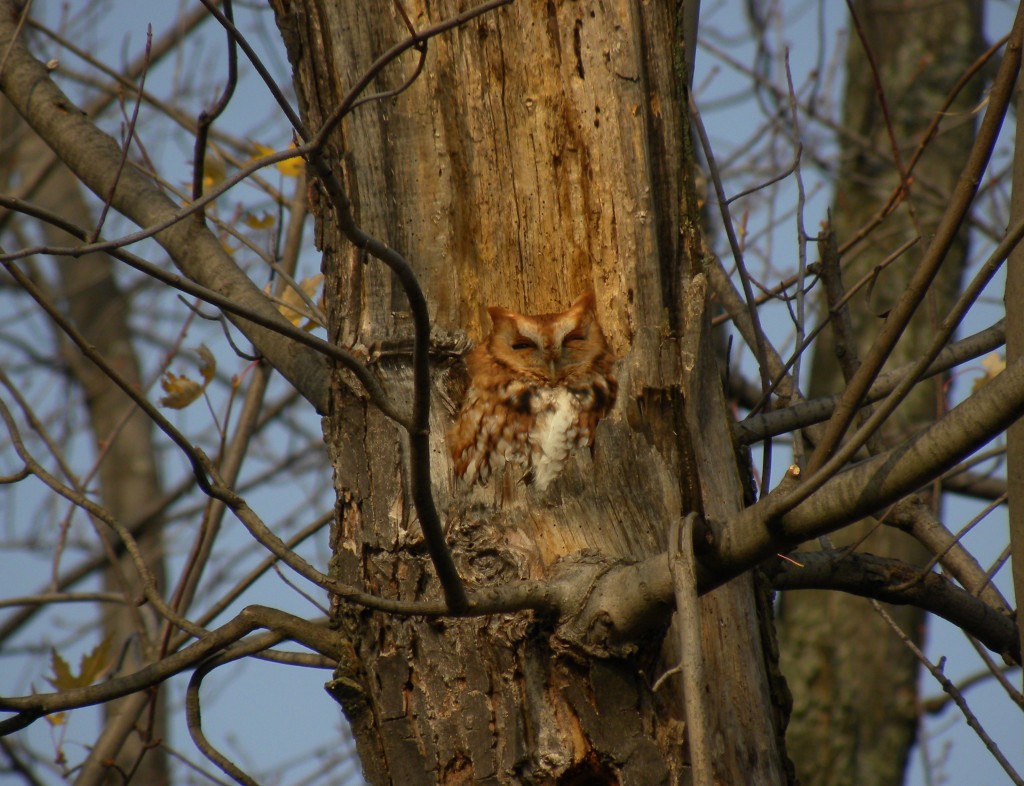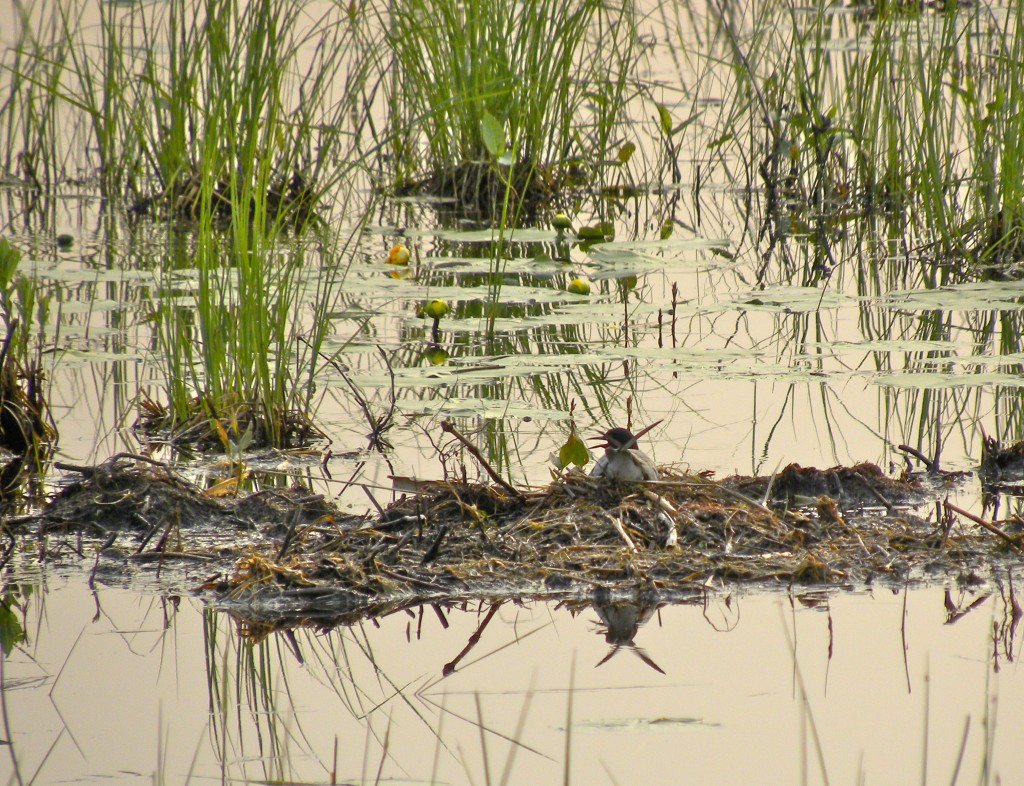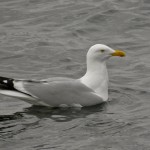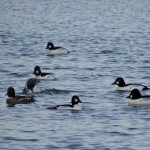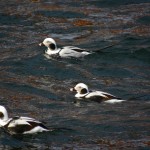December 31 2012. Om my way home from examining some beaver dams that are ruffling municipal feathers, I stopped to check some clusters of ducks out on the lake. They were offshore from my city’s most popular park, and from the road I could see there was much more out there than geese and swans.
Well, it turned out that there wasn’t really a whole lot more, just a couple of Mute Swans, a few pairs of Red-breasted Mergansers, dozens of Canada Geese but best of all, many hundreds of Long-tailed Ducks who were entertaining and instructive. Good enough to be Bird of the Day.
The park has an abrupt seawall and footpath so it’s easy to get close to the water, which slops and surges about two metres below. Looking down into its murkiness I was somewhere between amused and enchanted to watch many Long-tailed Ducks come bobbing to the surface then, shaking off little rivulets, hurriedly paddle a safe distance away.
I wondered what their instinct tells them about humans? After all they are an Arctic duck, not endlessly persecuted by urban goings-on, and neither are they sport-hunted in Canada. (Perhaps because as P.A Taverner writes in the 1934 book, Birds of Canada, “It is considered nearly worthless as a table bird.”) It’s not that I expect them to mill around like brainless pigeons in Trafalgar Square or anything like that, but I’m curious to know what they understand as a threat to their safety. Why does the arrival of a bipedal vertebrate at the shoreline mean trouble? Or does it? I suspect it’s more a case of ‘That’s odd/sudden/different, lets move away and see what happens’.
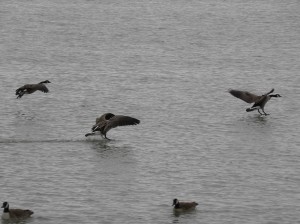
As an aside, while I scanned the rafts of Long-tailed Ducks farther off shore, a small group of Canada Geese flew in and landed (watered?) not far away. I’m always impressed by the landing / watering skills of ducks and swans. The natural control that enables a fast flying animal to bank, turn and slow, then parachute down at an ambling pace and then skid briefly before settling on the water, and with a couple of wing-tuck ruffles, paddle on; just like that. I wish I could get afloat so elegantly.
I watched the Long-tailed Ducks, who had evidently concluded that I presented no obvious immediate danger, approach the waters-edge again and resume diving for food. To call it a dive is really to overstate it because the transition from rubber-duck-floating-position to submerged is so apparently effortless. It’s as if by looking down they’re drawn under, as easy as blinking. Plop, and they’re gone!
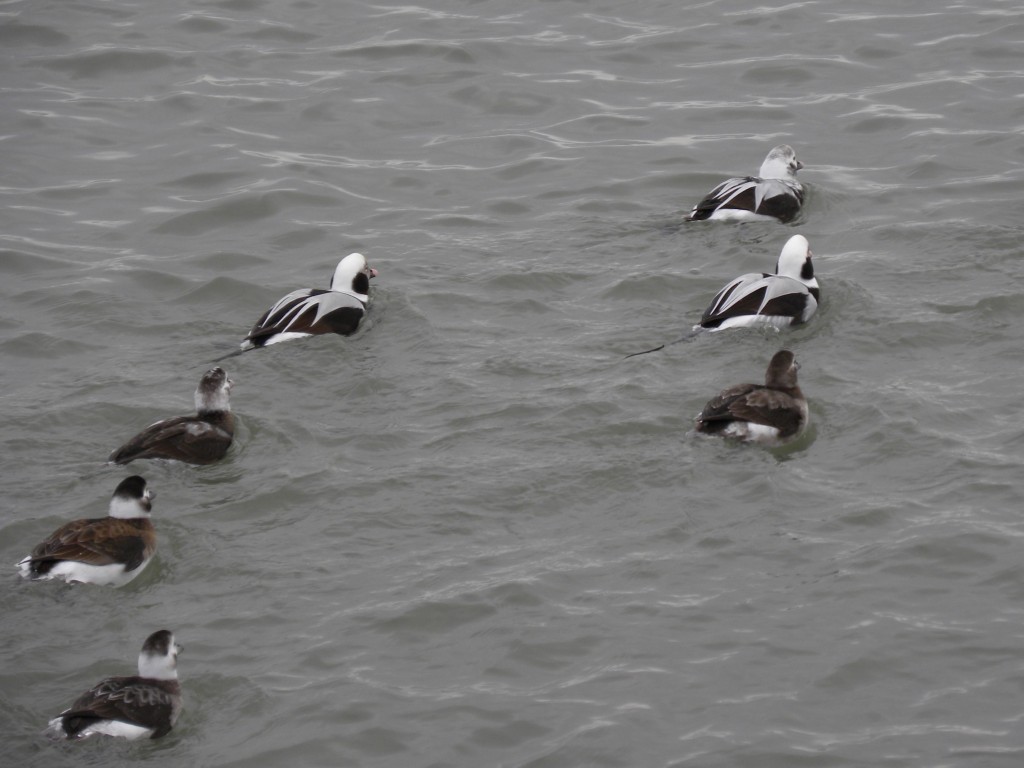
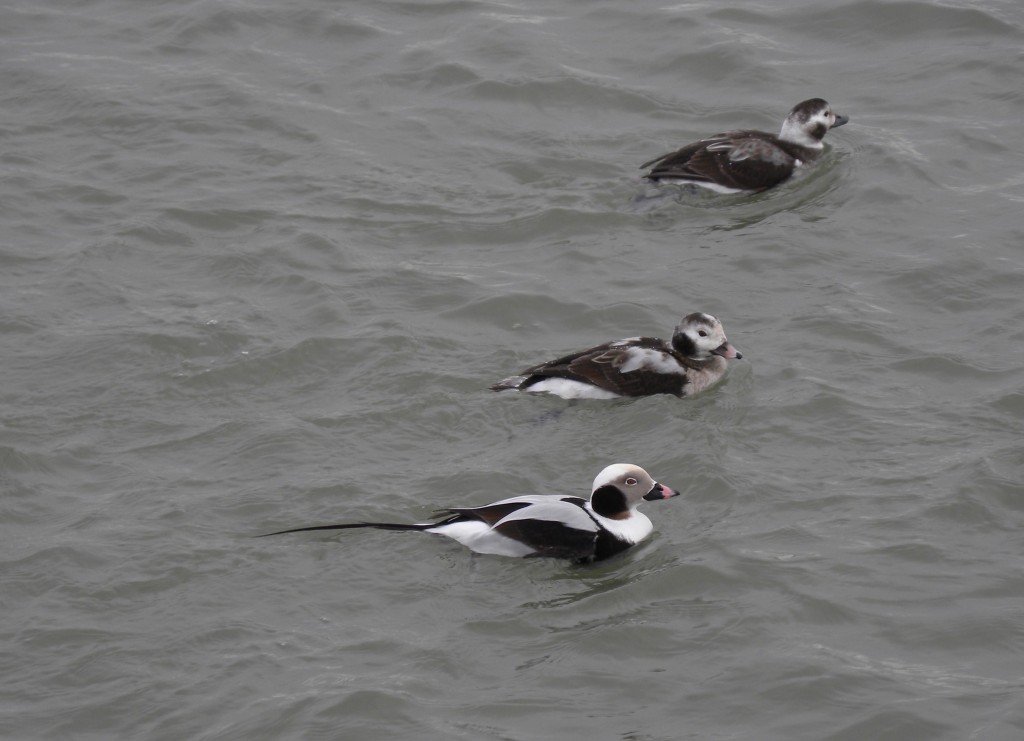
I managed to shoot of a bunch of photographs which serve to illustrate how varied is the plumage of these delightful birds. The males wear dapper black and white evening clothes, as if off to a society ball somewhere, while their somewhat dowdy mates are dressed to stay home and sweep the hearth. You’ll easily pick out who’s who in these photographs.
[slickr-flickr tag=”LTDU”]
